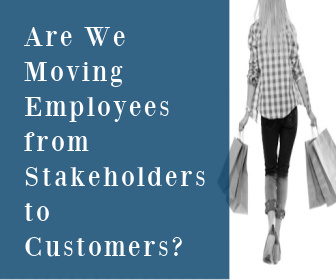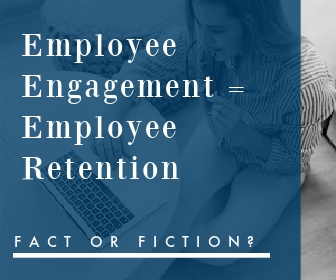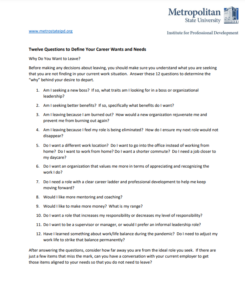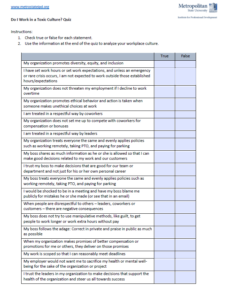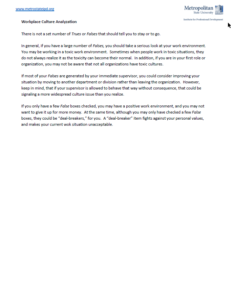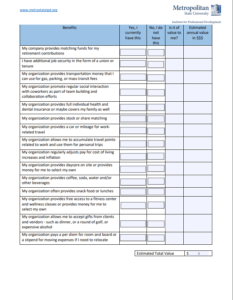Six Things You Can Skip to Improve Employee Engagement
Beth Schaefer | IPD Director
Have you noted the uptick in employee engagement information since we started this series of articles? Chicken or Egg?
Is everyone suddenly more interested in Employee Engagement – or – because we now have Employee Engagement on our radar, we notice it more?
Case in point: This article appeared in the Huffington Post, You Could Be ‘Quiet Quitting’ Your Job And Not Even Know It.
I heard this article being discussed on the radio and sought it out because when I was at a BBQ for the National Night Out, several of my neighbors and I were discussing a group of workers we were calling the slowly retiring.
I, of course, immediately connected ‘Quiet Quitters’ and ‘The Slowly Retiring’ to Employee Engagement.
My previous article in this series gave 6 actions that immediate supervisors could take to immediately increase employee engagement since they are the ones who have the most influence on engagement.
This article will discuss the 6 myths your organization should avoid if it wants to help those immediate supervisors maintain engaged employees.
Myth 1: Supervisors are too busy for training
Many supervisors are promoted for their technical skills and knowledge. They are experts in the work, not necessarily, experts in researched proven aspects of leadership. Research says that 70% of employee engagement is in the hands of the immediate supervisor, but only 26% of leaders say that employee engagement is part of their job that requires daily attention.
My note: Do the math: quite a gap between 70% and 26%. If your organization believes that not taking time to train supervisors is doing them a favor, you should rethink. Yes, they are busy – very busy, but if you structure your training so that it:
- targets their needs
- helps them solve issues they find challenging
- provides time to interact and get to know each other
- allows them to have some fun,
then, they will appreciate the new skills and knowledge. They may gripe on the way into training, but they should be re-energized on the way out.
Myth 2: We all need to agree on the perfect definition and measurement of Employee Engagement before we begin
The ultimate measurement of employee engagement is to simply see if your employee retention rate improves.
My notes: Just start. Share the 6 quick start tips with your supervisors.
With that said, having some training where you help your supervisors with engagement best practices and define what might be “in scope” or what might be “out of scope” on engagement tactics could be a helpful discussion for supervisors. Help supervisors determine what is feasible, viable, and desirable for employee recognition. The intersection of those three is the sweet spot for engagement.
Myth 3: Engagement surveys are the first step for improving employee engagement
Actually, most engagement survey results have only a small impact improving employee engagement.
My notes: Move forward without the survey. A common misstep of many organizations is to spend a bunch of time, money, and resources on an engagement survey and results sharing, but then run out of steam (or time, money, and resources) to form and implement an action plan that addresses engagement. Suddenly, it is time for the next survey without any meaningful interventions having taken place since the last one was issued. Interventions change survey results, not survey-taking.
Myth 4: Employee Engagement is fueled by high level inspirational speeches from CEO’s
Speeches do not do any harm, but no need to wait for a formal launch with the CEO.
My notes: Skip the speech. Spend the time equipping supervisors and let them start. Even if the CEO does not even believe in employee engagement, a supervisor can still implement the 6 quick start tips and have a positive effect on their staff and their engagement.
Myth 5: Internal branding and messaging will increase employee engagement
Research says that employees will stay and be engaged if they enjoy the people they work with. They need coworker friends to connect them to the company culture.
My notes: Put your energy into creating spaces that allow for interaction and fun. Do not think that the employee newsletter (while informative) will generate excitement needed for long-term employee retention.
Myth 6: Employees’ affection can be bought
If we have enough gifts and material incentives for achieving targets, employees will work hard to accumulate those things.
My notes: Focus on creating a career pathway. While most employees would not turn away gifts and perks, these alone will not hold them to a position where they see no opportunity for growth and/or do not enjoy working with their team. I know what you want to tell me: some employee do not want to move on. That is OK. The conversation will still acknowledge their talents and contributions to the organization. Still a win.
What Can the Organization Do?
If HR is not excited about leaving employee engagement to immediate supervisors, one action item they can do to help (besides training and equipping immediate supervisors) is to ensure that supervisors write individual employee performance goals that connect to the organization’s performance goals. That way, if most individual employees are meeting their performance goals and the organization is under-performing, leaders will at least know that it is not an employee performance or employee engagement issue. No survey needed.

